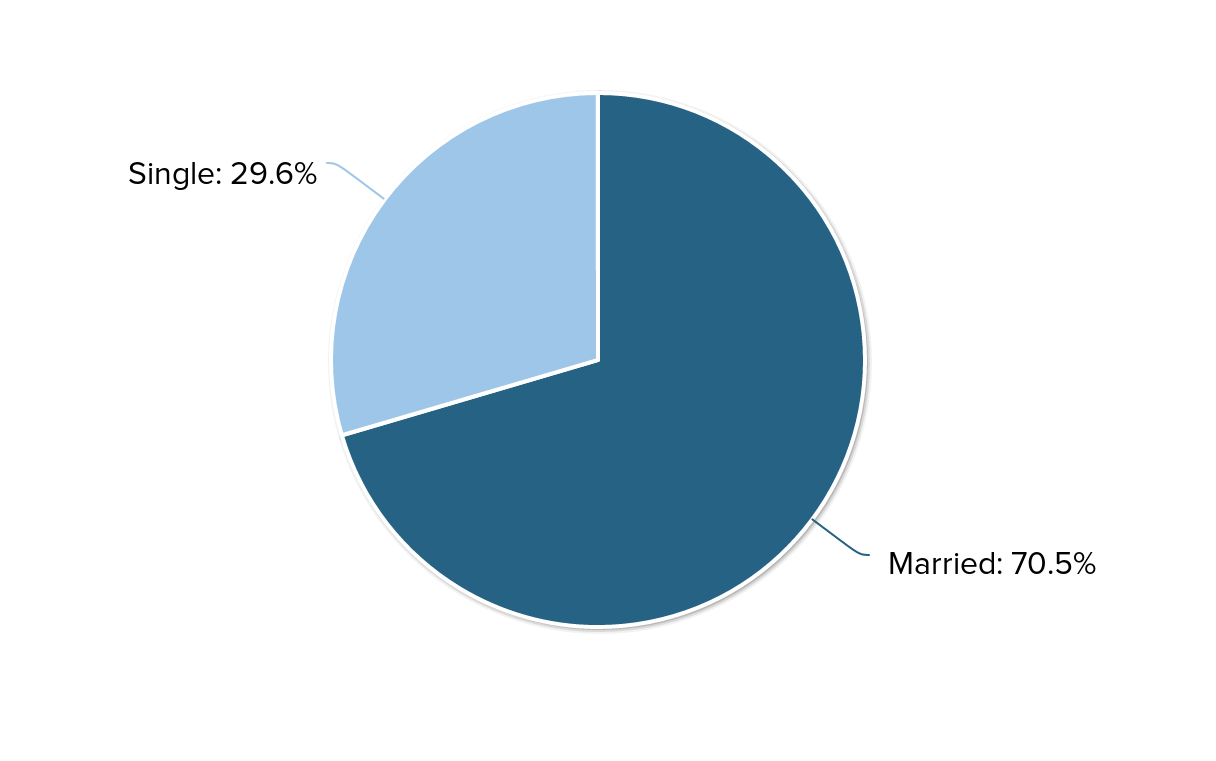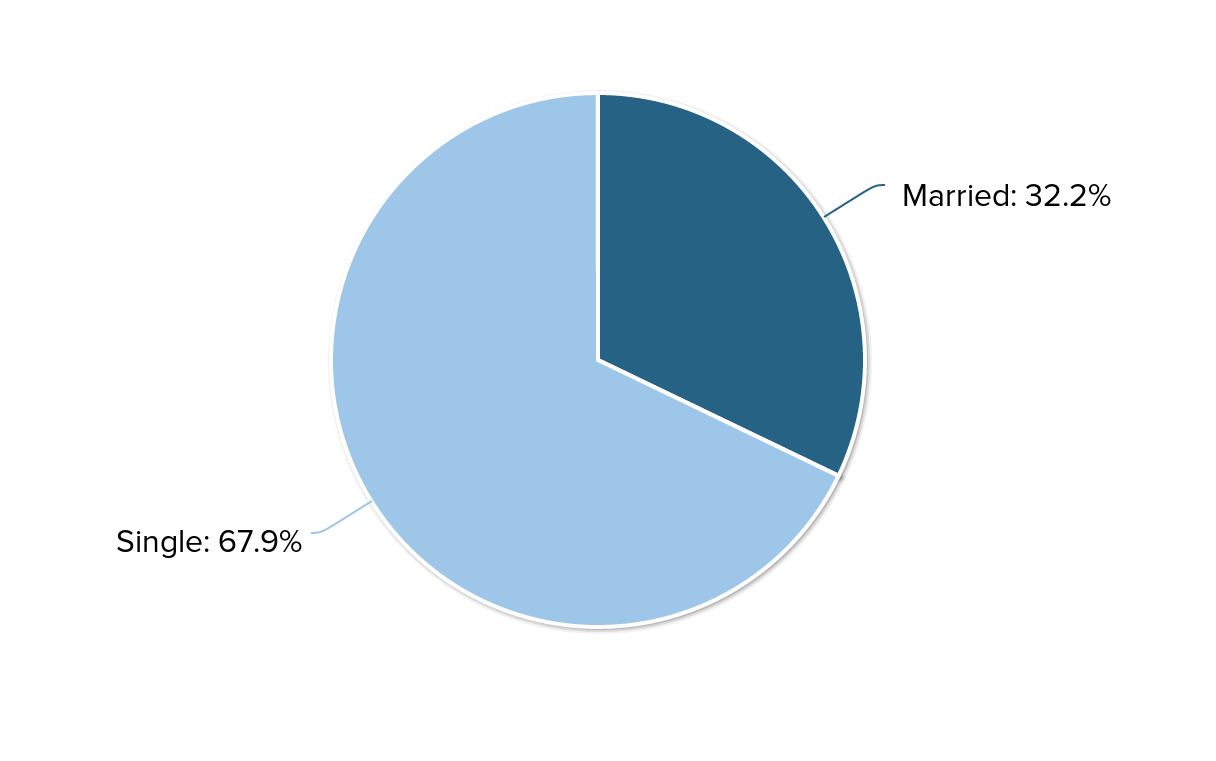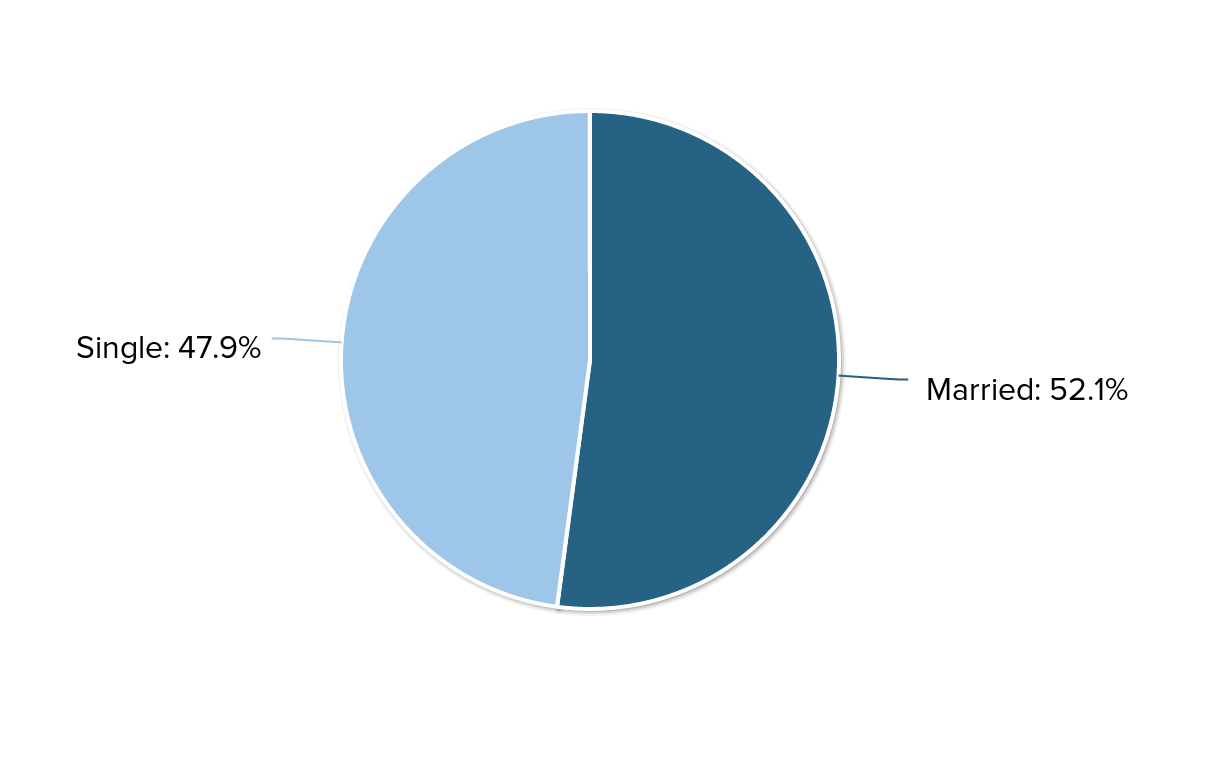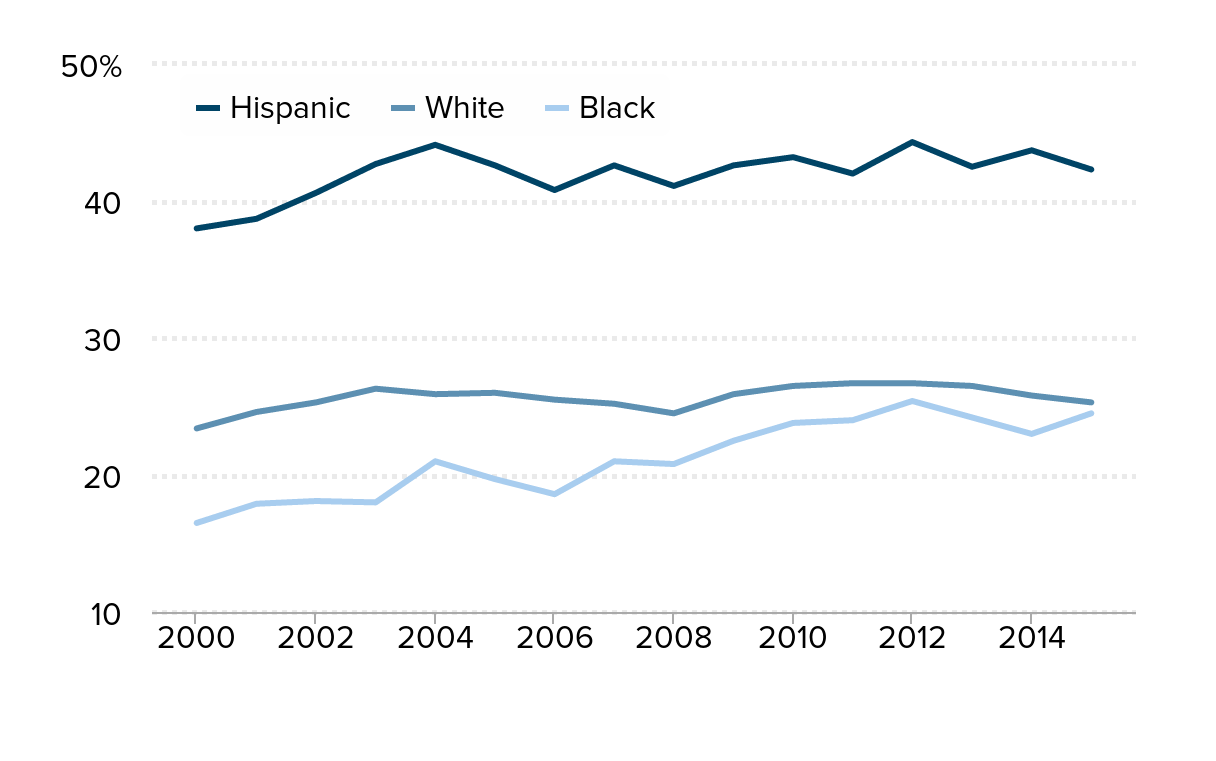African American women stand out as working moms play a larger economic role in families
In a previous post, we noted that annual work hours for all workers, especially low-wage African American workers and women, increased between 1979 and 2015. Working moms are significant contributors to this trend—half of all African American female workers are moms, as are 55.3 percent of Hispanic working women and 44.5 percent of white female workers. While all moms are working more hours per year and contributing more to their households financially, African American working moms are uniquely central to the economic well-being of their families.
To begin with, more than two-thirds of all African American working mothers are single moms, making them the primary, if not sole, economic providers for their families. By comparison, 29.6 percent of white working mothers and 47.9 percent of Hispanic working mothers are single.
Working mothers by marital status, by race and ethnicity, 2015
White mothers
| Martial status | Percent of white female workers |
|---|---|
| Married | 70.45% |
| Single | 29.55% |

Black mothers
| Martial status | Percent of black female workers |
|---|---|
| Married | 32.15% |
| Single | 67.85% |

Hispanic mothers
| Martial status | Percent of Hispanic female workers |
|---|---|
| Married | 52.12% |
| Single | 47.88% |

Source: EPI analysis of Current Population Survey Annual Social and Economic Supplement data
But married African American mothers also play a major economic role in their families, one that’s distinct from other groups of working mothers but often missed in analyses of working women as a group.
As shown in the table below, in 2015, married black women with children worked over 200 hours more per year than married white or Hispanic women with children, and 339 hours more than black single mothers. Married black working moms also worked 132 hours more per year than childless non-elderly black working women, despite having the added responsibility of caring for children. By contrast, childless non-elderly white and Hispanic working women worked more per year than white and Hispanic women with children.
Work hours and wages of working women by family structure, race and ethnicity, 2015
| Annual hours | Weeks worked | Weekly hours | Hourly wage | |
|---|---|---|---|---|
| Married women with children | ||||
| White | 1727 | 47.1 | 36.7 | $ 26.29 |
| Black | 1928 | 49.1 | 39.3 | $ 23.46 |
| Hispanic | 1686 | 46.1 | 36.6 | $ 18.04 |
| Single mothers | ||||
| White | 1541 | 44.0 | 35.0 | $ 17.44 |
| Black | 1589 | 43.8 | 36.3 | $ 15.10 |
| Hispanic | 1553 | 44.6 | 34.8 | $ 14.32 |
| Childless, non-elderly women | ||||
| White | 1781 | 47.1 | 37.8 | $ 20.77 |
| Black | 1796 | 47.1 | 38.2 | $ 17.97 |
| Hispanic | 1714 | 46.7 | 36.7 | $ 16.83 |
Source: EPI analysis of Current Population Survey Annual Social and Economic Supplement data
Not only do black working moms work more hours than their white and Hispanic counterparts, but they are more likely to work, period. As shown in Figure B, among all married moms, African American women are less likely than white or Hispanic moms to be non-earners (working zero hours and earning zero wages over the course of a year).
It is worth noting that the share of married black women who are non-earners gradually began rising in 2000, and increased sharply alongside skyrocketing black unemployment rates during the Great Recession (between 2007 and 2012), resulting in rates much closer to married white moms by 2015. The non-earner trend for white and Hispanic working moms did not rise nearly as much during those Great Recession years, suggesting that white and Hispanic women were more likely to be voluntary non-earners, as opposed to unemployed.
Share of married women with children who are non-earners, by race and ethnicity, 2000—2015
| Year | White | Black | Hispanic |
|---|---|---|---|
| 2000 | 23.4% | 16.5% | 38.0% |
| 2001 | 24.6% | 17.9% | 38.7% |
| 2002 | 25.3% | 18.1% | 40.6% |
| 2003 | 26.3% | 18.0% | 42.7% |
| 2004 | 25.9% | 21.0% | 44.1% |
| 2005 | 26.0% | 19.7% | 42.6% |
| 2006 | 25.5% | 18.6% | 40.8% |
| 2007 | 25.2% | 21.0% | 42.6% |
| 2008 | 24.5% | 20.8% | 41.1% |
| 2009 | 25.9% | 22.5% | 42.6% |
| 2010 | 26.5% | 23.8% | 43.2% |
| 2011 | 26.7% | 24.0% | 42.0% |
| 2012 | 26.7% | 25.4% | 44.3% |
| 2013 | 26.5% | 24.2% | 42.5% |
| 2014 | 25.8% | 23.0% | 43.7% |
| 2015 | 25.3% | 24.5% | 42.3% |

Source: EPI analysis of Current Population Survey Annual Social and Economic Supplement data
What’s behind this greater attachment to the labor force? For African American women, it may have to do with higher rates of black unemployment and racial pay and wealth disparities motivating the greater intensity of work relative to other groups. Economic policy has unquestionably failed single working mothers, who tend to work fewer hours in lower-wage jobs and often lack necessary family work supports like paid leave, health care and retirement benefits, affordable high quality child care and more predictable work scheduling. While married mothers tend to be better off financially, these family friendly policies are also important as they strive to balance family responsibilities and increased work hours.
Enjoyed this post?
Sign up for EPI's newsletter so you never miss our research and insights on ways to make the economy work better for everyone.
